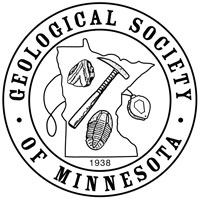Seminar Lab Date:
Seminar Lab presenter:
Seminar Lab Subject:
Seminar Lab Location :
A recording of this lecture is available on the Geological Society of Minnesota YouTube channel here: https://www.youtube.com/watch?v=19GNJNpNRqk
Seminar Lab Details:
Abstract: The effects of numerous glaciation over the last 2.5 million years have significantly shaped the Midwest. Rivers, lakes, landforms, and even soil owe much to the advance of ice. The scale of the glaciers that descended during these glacial periods makes their processes hard to fathom, but careful study of the resulting sediments and landscape can reveal important clues about the behavior of an ice sheet, including its source, influence of the underlying bedrock, and response to change in climate. The foremost complicating factor, however, is glaciers both erode and deposit material with each advance. Since the start of Midwestern glacial research at the end of the 19th century, geologist have recognized overall trends throughout the Midwest. These indicate that the North American Ice sheet was dynamic and did not behave similarly through its multiple iterations. Iowa was only 1/3 covered by the last ice sheet and thus holds an important glacial record that is close to the surface. It also sits between the two largest glacially affected rivers, the Missouri and Mississippi, which also provide a source of glacially-derived windblown silt. Called loess, this record can be used to further our understanding of glacial behavior by recording the timing of ice advance and retreat. By understanding the history of ice advance, one can look out their window in the Midwest and grasp the cause of the resulting landscape.
The talk will start off about Iowa, but will then spread to the rest of the North America, since there are many factors that influence the behavior of ice. This should have a bit of something for everyone - stratigraphy, mineralogy, geomorphology, and great maps!
Biography: Phil Kerr is a quaternary geologist for the Iowa Geological Survey. He attended the University of Iowa for his BS and MS degrees in geoscience. His master’s thesis worked on the timing and distribution of a Middle Wisconsin ice advance into Iowa (through Minnesota, too!). Being born in the center of the state, he has taken a deep interest in understanding the sequence of glacial events that led to Iowa’s palimpsest landscape.
